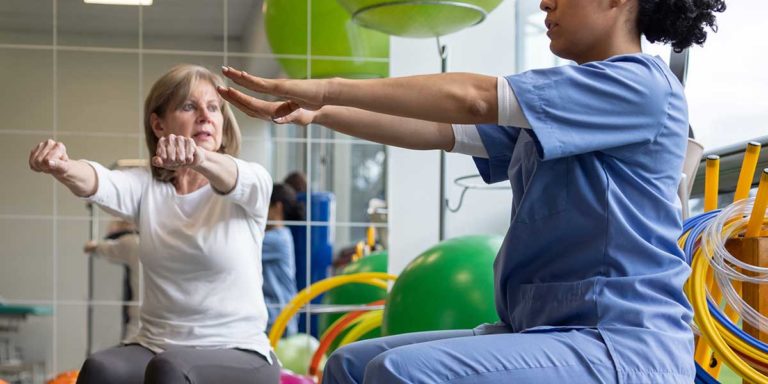The Importance of Stretching and Flexibility in Physical Therapy
Physical therapy is a critical component of rehabilitation and recovery for individuals who have suffered injuries, undergone surgery, or are dealing with chronic pain. While physical therapy encompasses a wide range of techniques and exercises, one aspect that should not be overlooked is stretching and flexibility training. The importance of stretching and flexibility in physical therapy cannot be overstated. In this article, we will delve into why these aspects are integral to the rehabilitation process and how they can benefit patients in various ways.
Injury Prevention
Stretching and flexibility exercises play a significant role in injury prevention. When our muscles and joints are flexible, they are less prone to strains, sprains, and tears. By incorporating these exercises into a physical therapy regimen, patients can maintain or improve the range of motion in their joints. This, in turn, reduces the likelihood of developing muscle imbalances and joint restrictions that can lead to injuries.
For example, if you’ve recently had knee surgery, your physical therapist may recommend specific stretching and flexibility exercises to ensure the knee joint remains flexible and strong. This helps prevent issues like joint stiffness and muscle tightness that could lead to future problems.
Pain Reduction
Chronic pain can be a debilitating and frustrating condition to manage. In many cases, pain is the result of muscle imbalances, joint restrictions, or scar tissue. Stretching and flexibility exercises are invaluable in reducing pain by addressing these issues.
For instance, someone suffering from lower back pain may be taught gentle stretches to lengthen and relax the muscles around the lower back and hips. This can alleviate the tension and discomfort that often accompanies chronic back pain.
Improved Range of Motion
Range of motion (ROM) refers to the extent to which a joint can move in various directions. Many injuries and medical conditions can lead to a reduction in ROM. Physical therapists use stretching and flexibility exercises to improve a patient’s ROM, which is essential for regaining functional mobility.
Patients who have had joint replacements, like a hip or knee replacement, benefit greatly from these exercises. Stretching helps in restoring the joint’s natural movement and function. Over time, consistent stretching can lead to increased ROM, which is essential for daily activities and overall quality of life.
Enhanced Performance
Physical therapy isn’t just for rehabilitation; it’s also beneficial for athletes and individuals looking to enhance their physical performance. Stretching and flexibility exercises are vital components of sports-specific rehabilitation and training programs.
Athletes require optimal flexibility to achieve their best performance and reduce the risk of injury. A runner, for example, needs flexible hip and leg muscles to ensure a full range of motion. Stretching before and after physical activity helps improve muscle pliability, reduce muscle soreness, and enhance overall athletic performance.
Stress Reduction
The relationship between the mind and body is undeniable. Stress and tension can manifest physically in the form of muscle tightness and discomfort. Stretching and flexibility exercises not only provide physical relief but also contribute to mental and emotional well-being.
During physical therapy sessions, patients often report feeling more relaxed and less stressed after stretching. The deep, controlled breaths used during stretching exercises help activate the body’s relaxation response, reducing stress and promoting a sense of calm.
Posture Improvement
In our modern, sedentary lifestyle, poor posture is becoming increasingly common. Slouching at desks, staring at screens, and carrying heavy bags can all contribute to posture-related issues. Physical therapists can address these problems by incorporating stretching and flexibility exercises into the treatment plan.
Stretching exercises target specific muscle groups that can help correct posture issues. By strengthening and lengthening key muscles, patients can experience an improvement in their posture, which can, in turn, reduce strain on the spine and decrease the risk of future problems.
Stretching and flexibility are integral aspects of physical therapy that should not be underestimated. They offer a wide range of benefits, from injury prevention to pain reduction, improved range of motion, enhanced performance, stress reduction, and posture improvement. The integration of these exercises into a comprehensive physical therapy program is crucial for achieving long-term rehabilitation and overall well-being.
Whether you’re an athlete looking to improve your game, someone recovering from surgery, or simply seeking relief from chronic pain, stretching and flexibility exercises, guided by a skilled physical therapist, can make a significant difference in your journey toward better health and mobility. So, don’t underestimate the importance of stretching and flexibility in physical therapy—it’s an investment in your body’s future well-being.
Ready to unlock your greatest potential? Get Started with TPI Therapeutic Potential, Inc. today and experience the transformative power of our multi-sensory clinical approaches!







